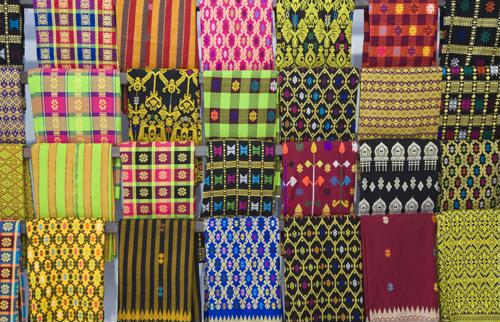
Combining patterns is the perfect way to energize an outfit, but it's an even better way to stimulate a room. It can be a challenge, but when executed correctly it's absolutely worth the risk. Don't be afraid to go big with these tips on how to mix prints.�
Two-tone palette
One of the most failsafe methods of combining patterns is to limit your color scheme to two hues. House Beautiful recommended being extra careful by keeping one of the tones neutral to complement whatever second color you choose. For example, mix lemon zest with an optic white and use natural accents to taper the combo. Bamboo blinds are a great accessory in a room with wooden floors, and keeping the pigment simple gives you the freedom you need to go crazy with stripes and geometric prints.�
Monochrome
If you're decorating with a single color, you should definitely be using more than one pattern. Prints lend visual texture to a room, which creates enough variety�to make a monochrome room look chic, not boring. Remember that you can play with different shades of the same color when using patterns. Consider painting wide stripes on the walls using a pretty plum and a slightly lighter hue. Or, keep the walls simple and inject patterns with throw pillows, carpets and custom window treatments.�
Switch up the scales
One trick to mixing patterns successfully is to vary the scale. For instance, if you're thinking of using florals with stripes, look for stripes on the smaller size and bold flowers or vice versa. Prints that are the same size are more likely to clash than ones that are varied. Additionally, a smaller pattern will blend together more and even though it will hold the same level of interest, it will do more of what a solid would in terms of tempering the more bold pattern.�
Use texture as a pattern
You can mix patterns in a more subtle way by substituting some prints with deep textures. Materials such as wicker, seersucker, suede and leather are all a means of combining prints. The girlishness of a lace pattern and the masculinity of leather would contrast nicely in a study or living room, while seersucker would be a great accent to a nature-inspired print in a bedroom or dining room.�

